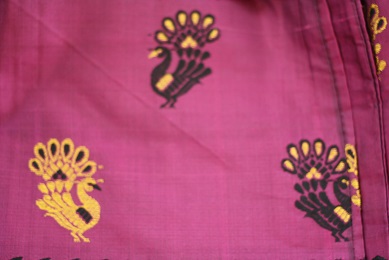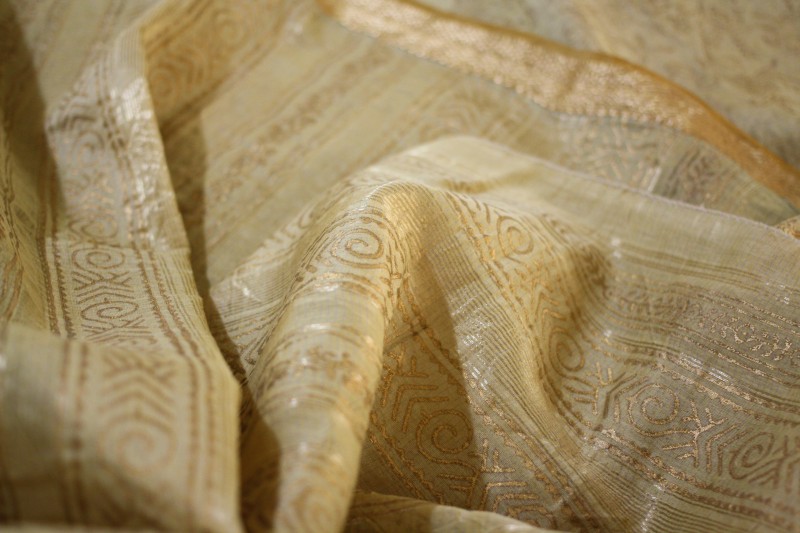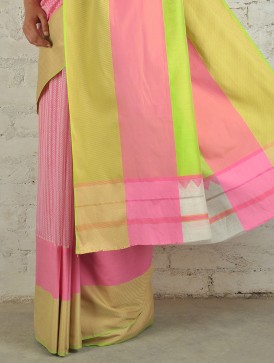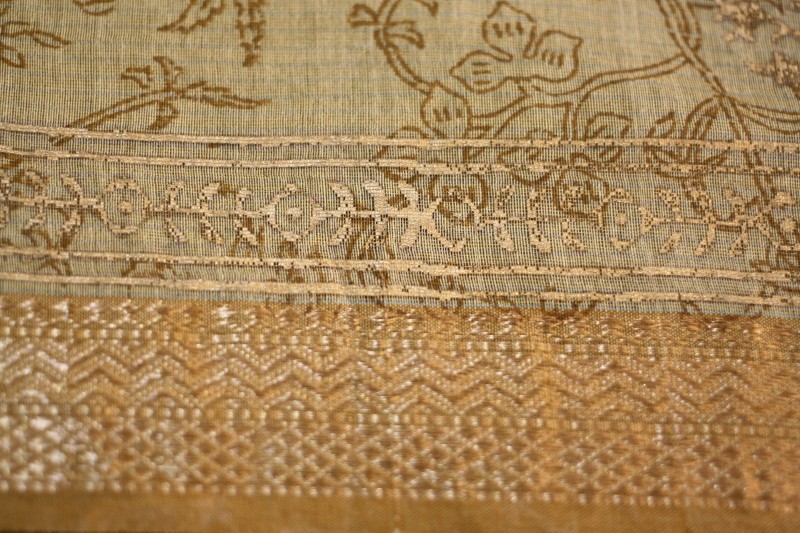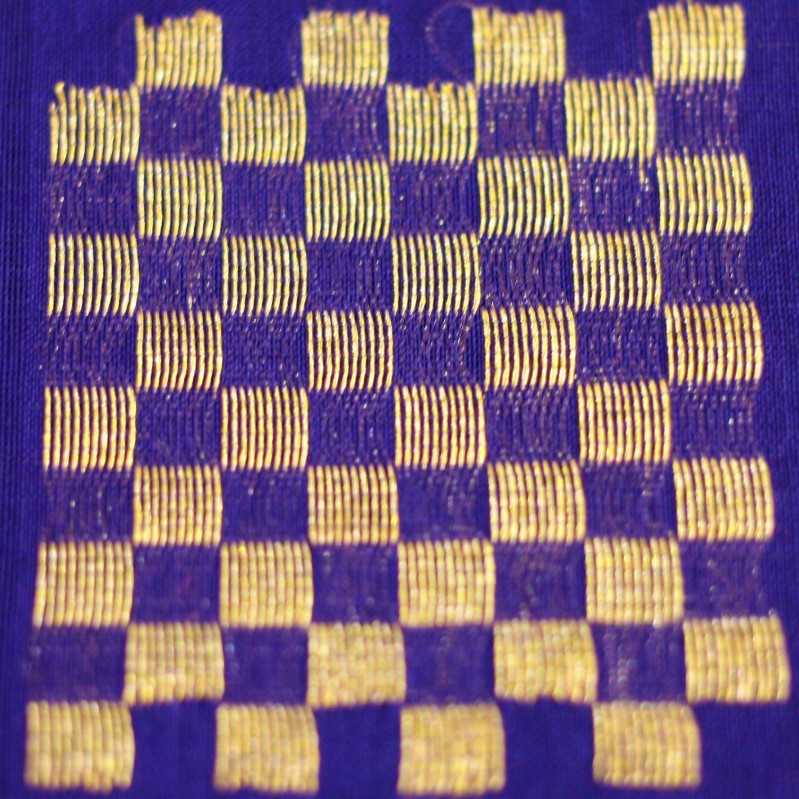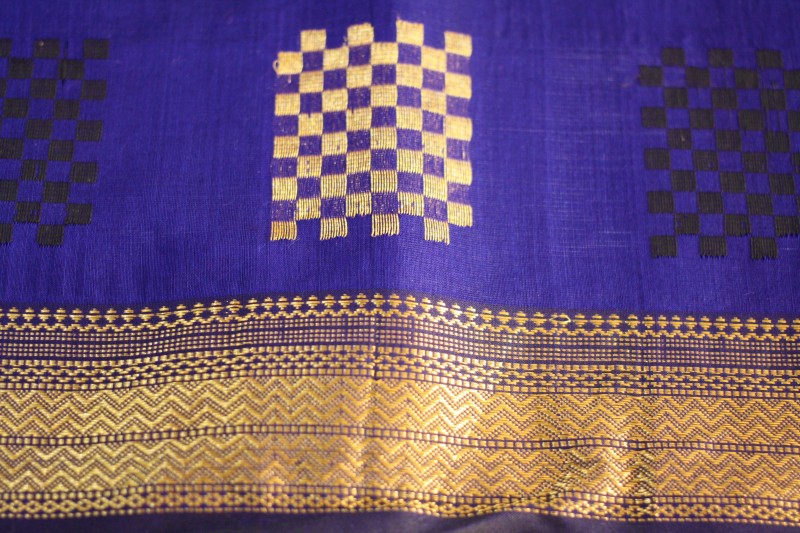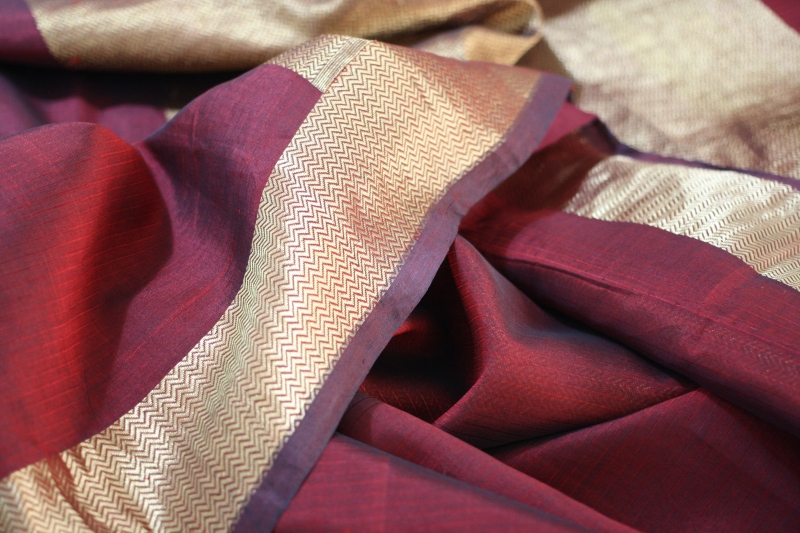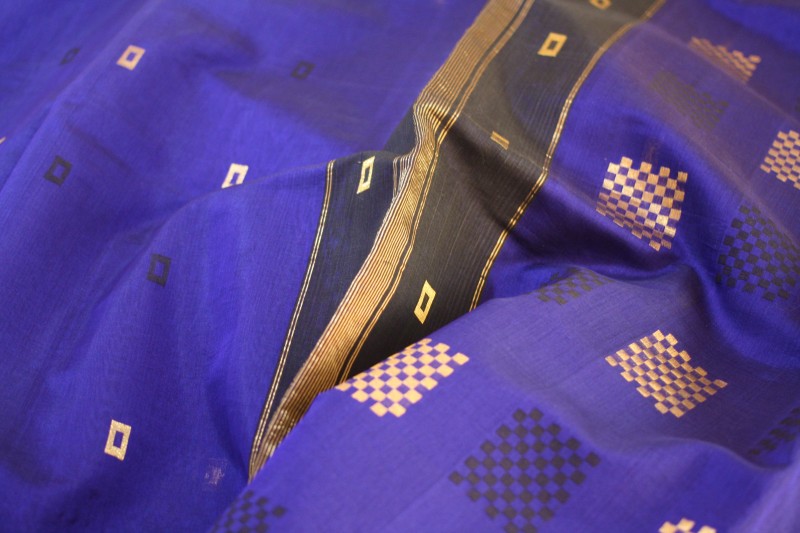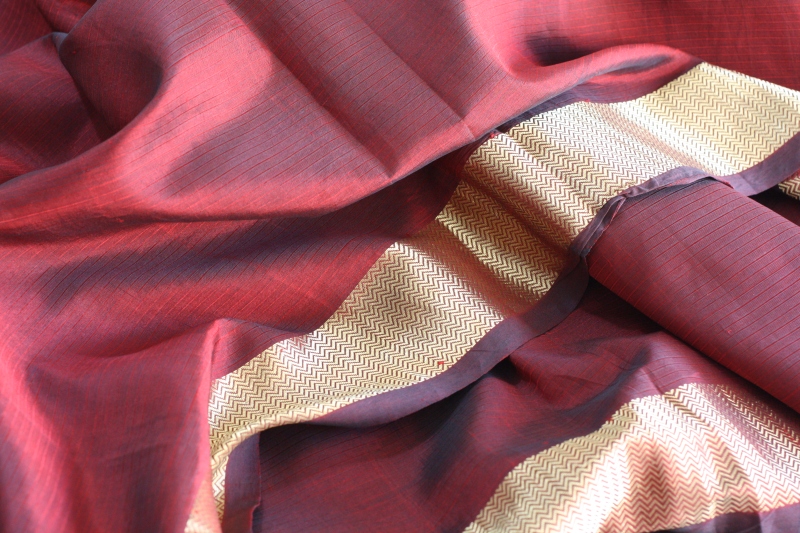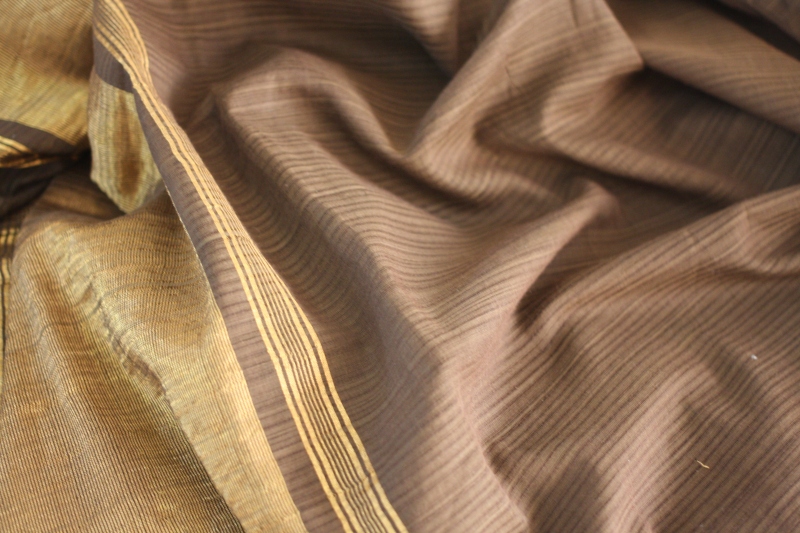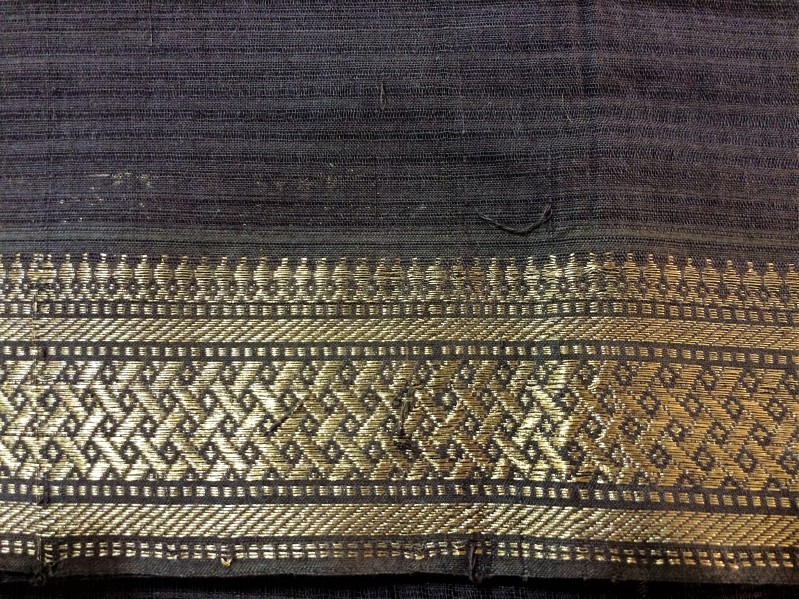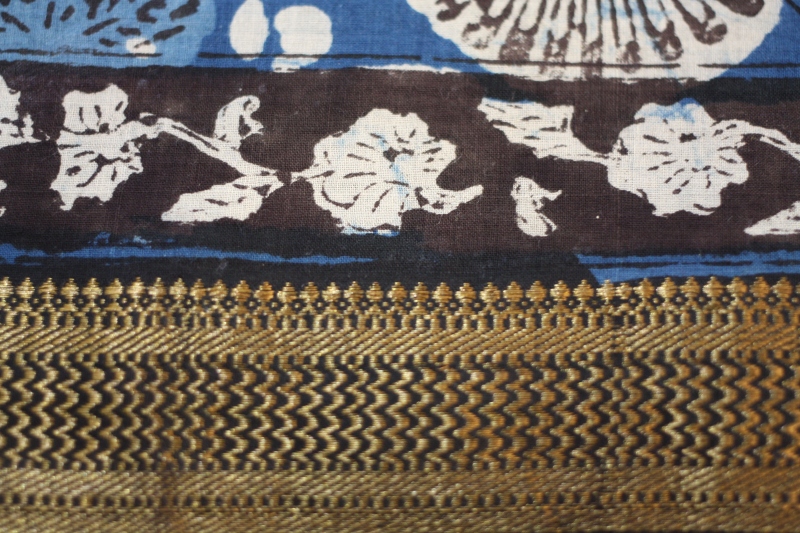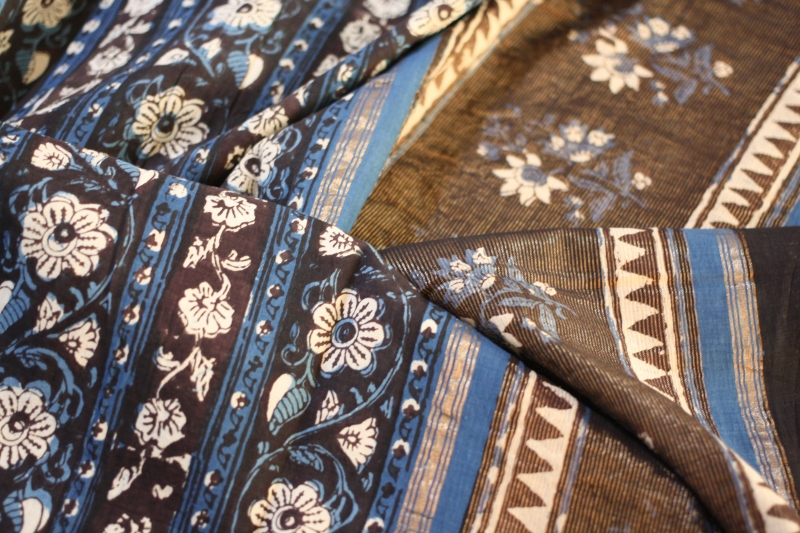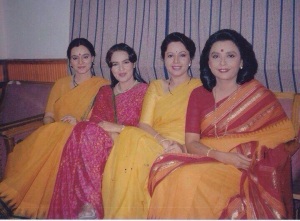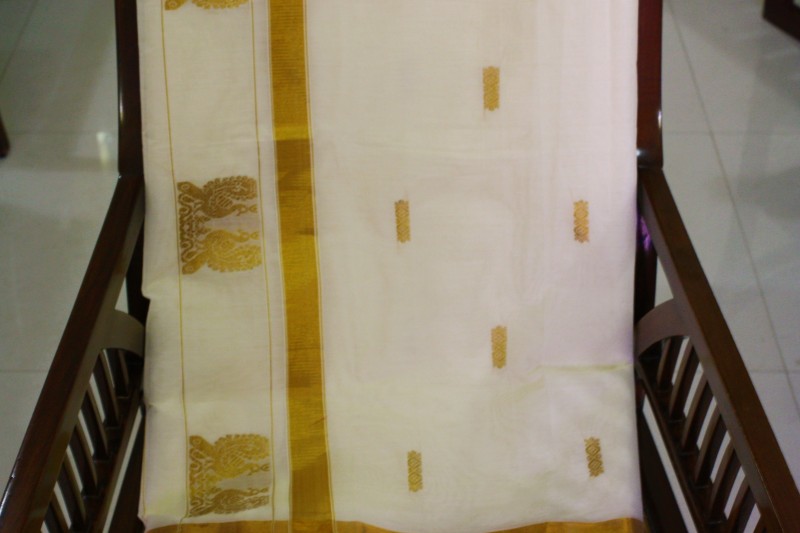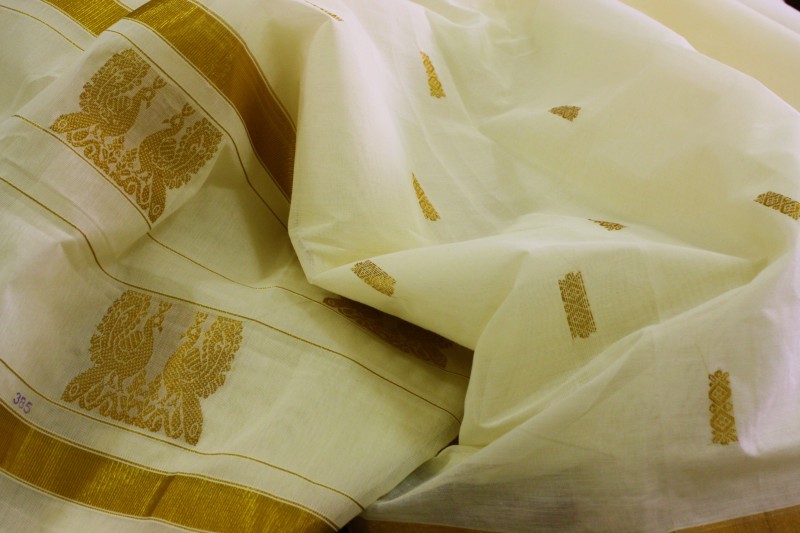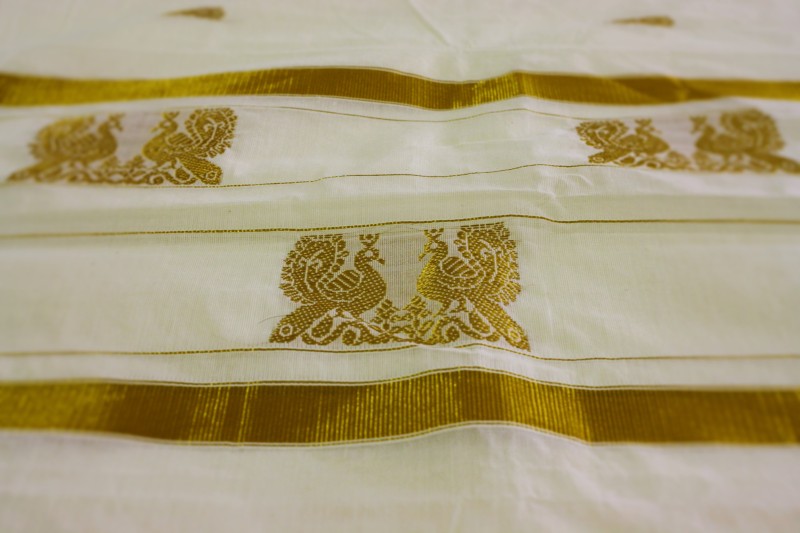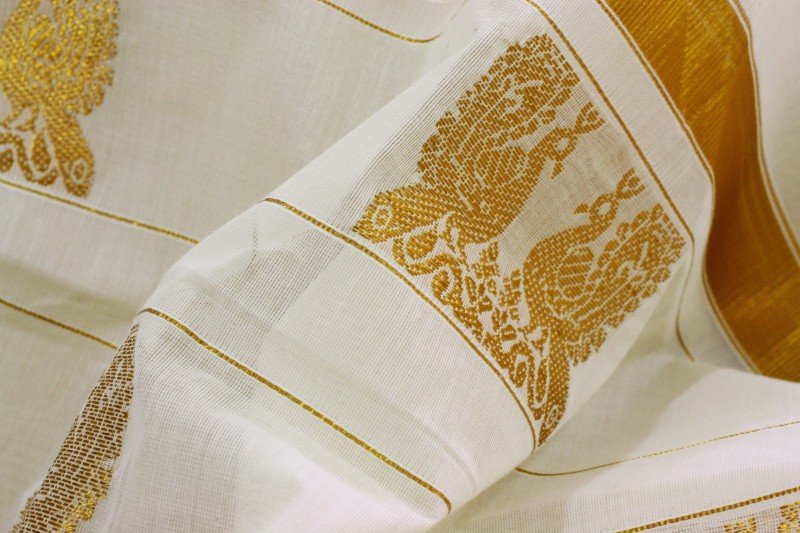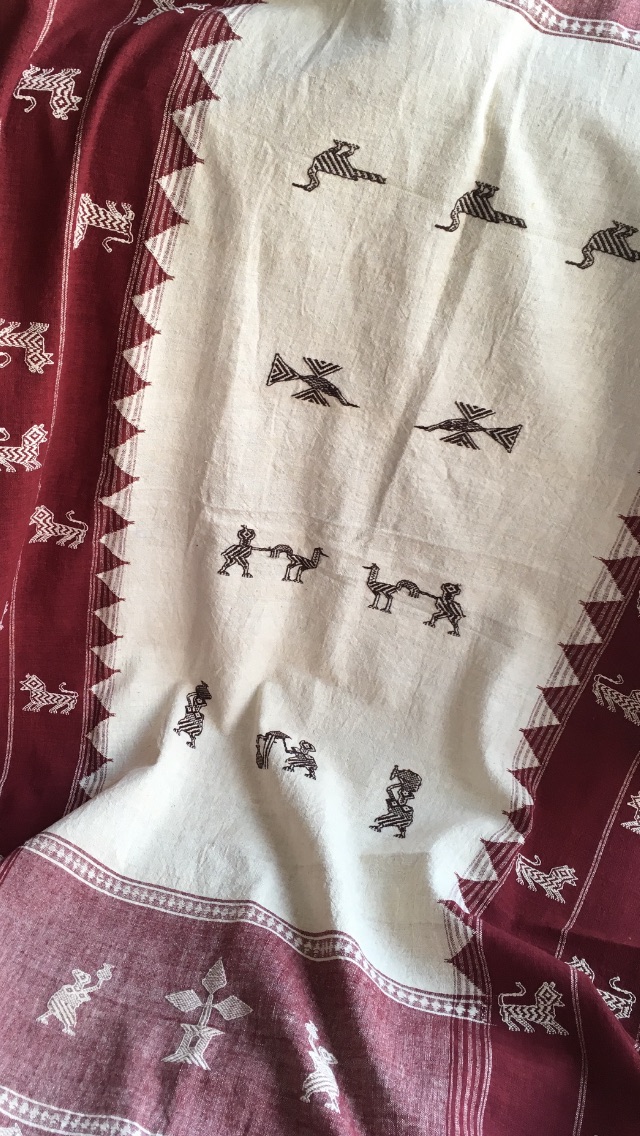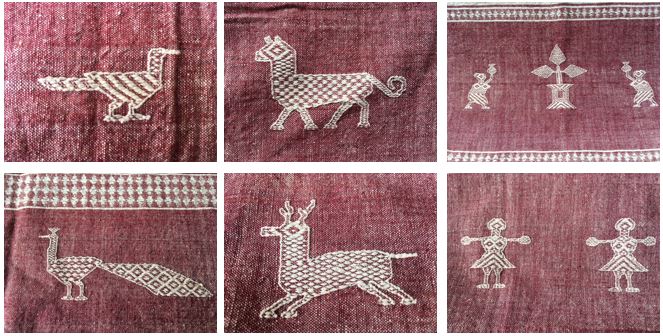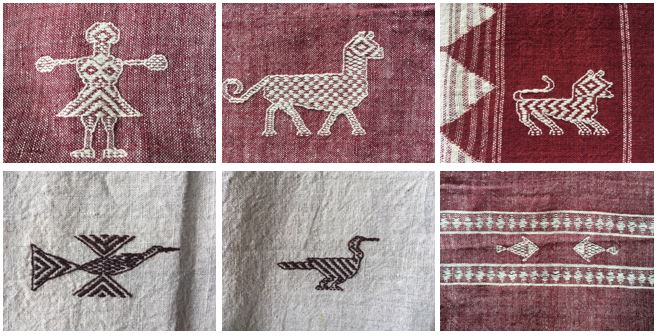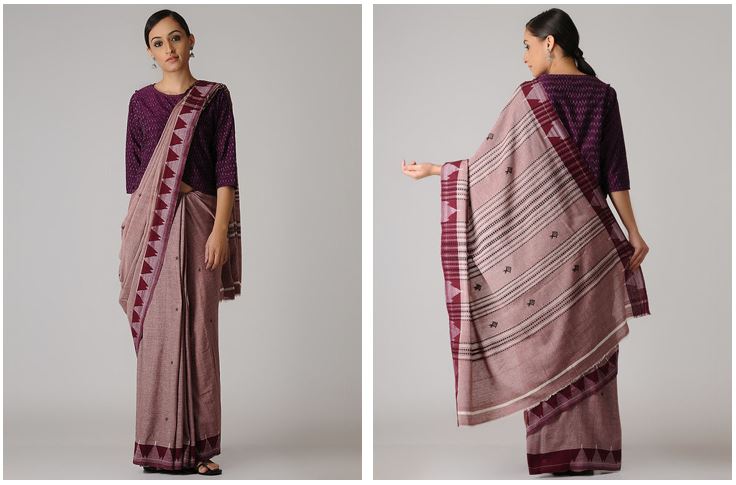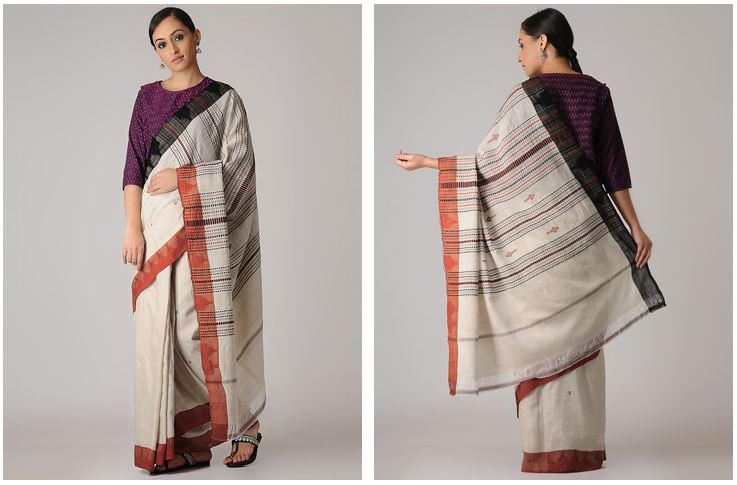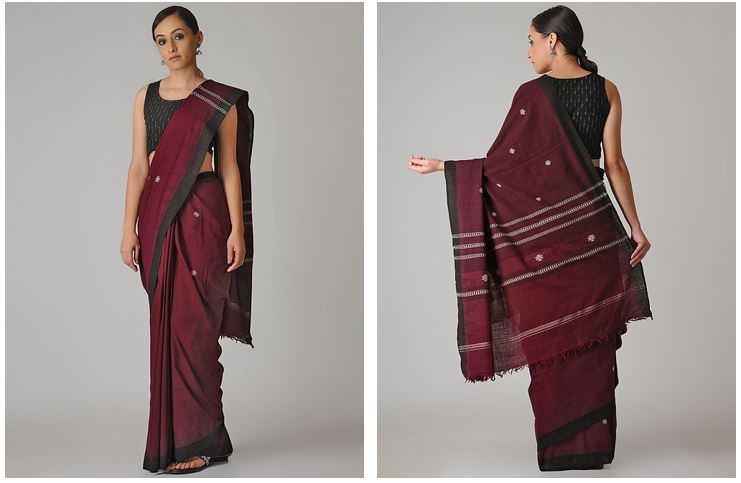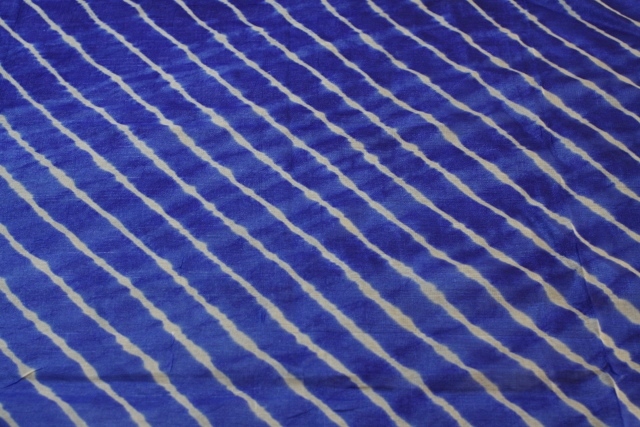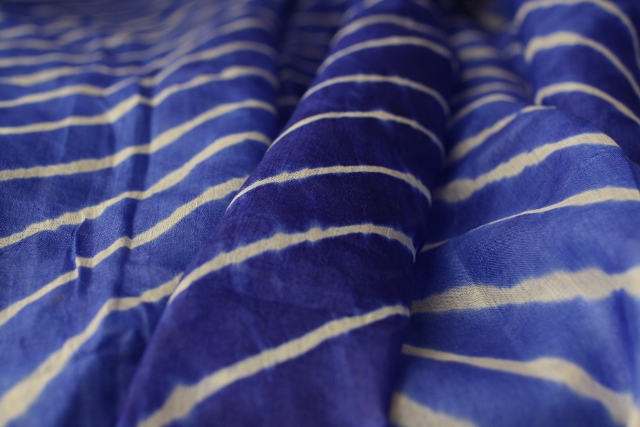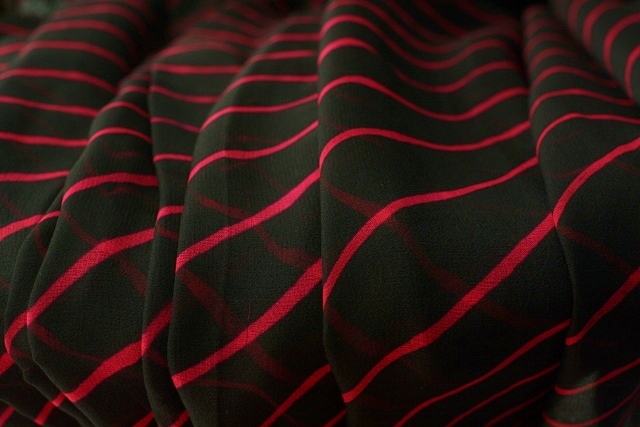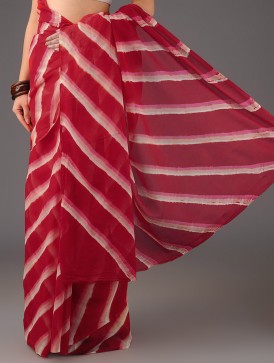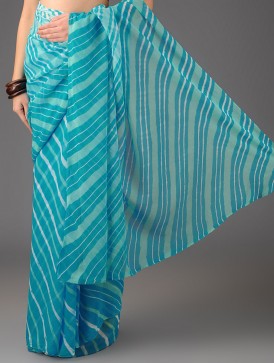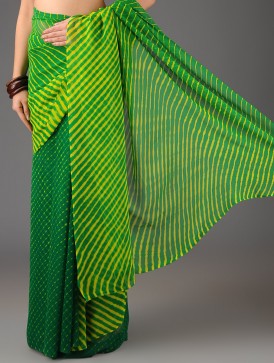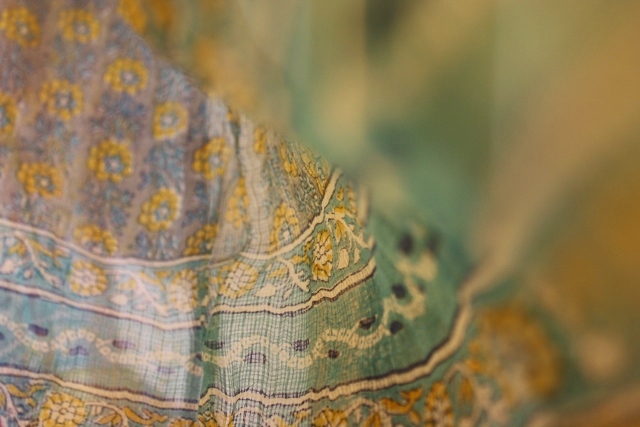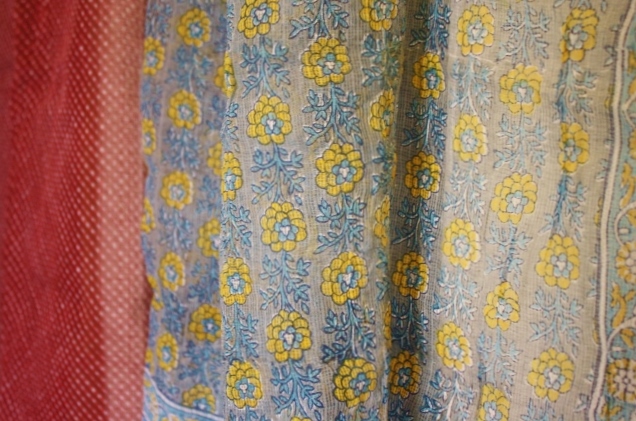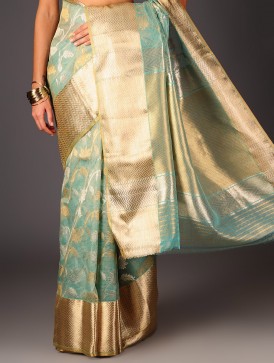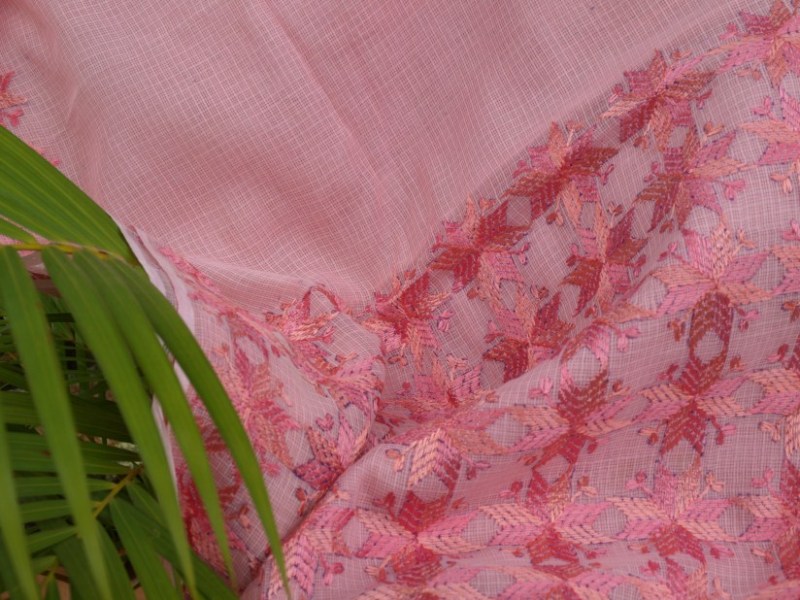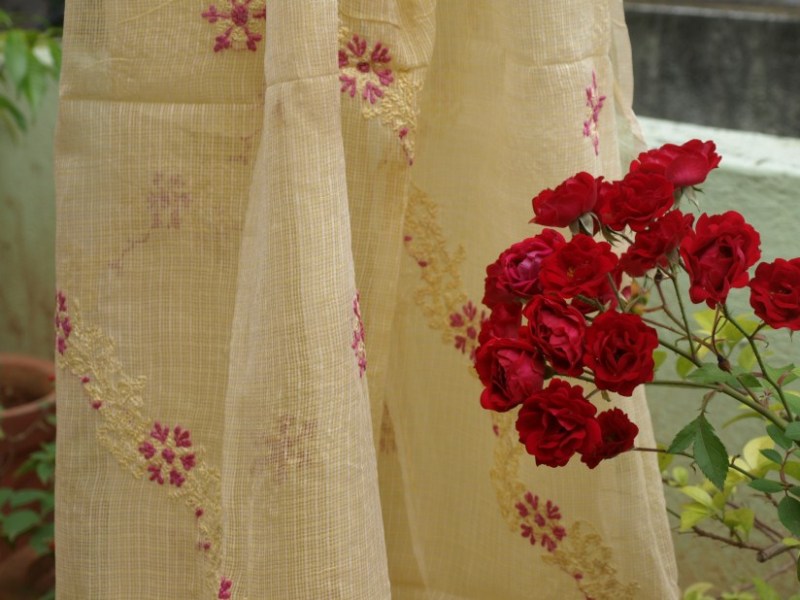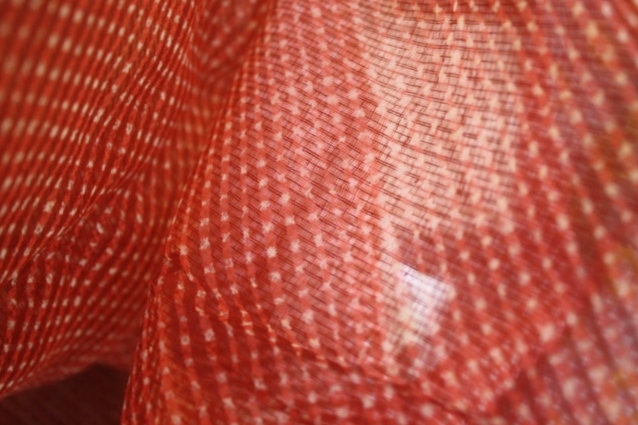THE DRAMA BEGINS
ACT 1 SCENE 1
Background: In her tastefully done up home office. Walls lined with bookshelves, stuffed with books. Walls without bookshelves are covered with handpicked Gond, Madhubani and Warli paintings. Plants at the window sill. Lazy boy.
She knows it is N now. Because N follows naturally after M. She knows N is for Narayanpet. She also knows something else. That this time, she’s completely lost.
To herself: I am sure there is a saree by this name. Just cannot seem to recollect where I have heard it. Where? Where? Where?
Switches on television, forgets about the blog.
ACT 1 SCENE 2:
Background: Somewhere on M. G. Road, Pune. Street with fancy and hole-in-the-wall saree shops.
She enters a shop, no a shoppe that is not so fancy but a bit more than a hole-in-the-wall.
She: (in Hindi): Do you have a Narayanpet saree?
Shoppe keeper: (in Hindi) No madam.
She: (in Hindi): Do you know where I could find one?
Shoppe keeper: (in Hindi) No madam.
She leaves.
She enters the next shoppe. No this one is a shop.
She: (in Hindi): Do you have a Narayanpet saree?
Shop keeper: (in Hindi) Yes madam, but it is out of stock.
She: (in Hindi, visibly thrilled): Oh really? Are they so popular? That’s great!
Shop keeper: (in Hindi) No madam. No one asks for them, so we don’t source them anymore.
She leaves the shop and returns to the hired car waiting for her. Turns her focus on next day’s client meeting. Forgets about the blog.
ACT 1 SCENE 3
Background: Bang on M. G. Road, Bengaluru. Next to the legendary Gangaram and Higginbotham’s. She enters one of the saree shops. She has hope, but very little.
She: (in English): Do you have a Narayanpet saree?
Shop keeper: (in Hindi) Yes madam, range?
She: (surprised, thrilled) No range, show all.
Shop keeper: (to assistant, presumably in Kannada): —x—
He receives a stack of sarees, and starts unfurling them while showering the same words of praise on each.
She: No…no…these look like Kanjeevarams. I want to see Narayanpet.
Shop keeper: No madam. No Narayanpet. You watch these sarees. Best latest designer Kanjeevarams. Less range Dharmavarams also.
Exits shop without gratitude. Escapes to Gangaram’s. Forgets about blog.
ACT 1 SCENE 4
Background: A bustling coffee shop in Mumbai, sipping Earl Grey tea with a knowledgeable friend.
Knowledgeable friend: How’s your saree blog coming along? Which alphabet have you reached?
She: N. A bit stuck on the Narayanpet. Can’t seem to understand whether this saree belongs to Maharashtra or Andhra-Telangana?
Knowledgeable friend: Oh that’s easy. If it is Narayanpet as in Begumpet, then it is Andhra-Telangana. If it is Narayanpeth, as in Sadashivpeth, then it is from Maharashtra. (chuckles).
She: Hey, I just remembered, I had this errand to run for my mom. Mind if I asked for the bill?
Exits conversation, mentally. Starts thinking about Frank Underwood. Forgets about the blog.
ACT 2 SCENE 1
Background: Hyderabad. A beautiful house, styled like a temple, with diyas all around, adding festive fervour to the warm air of Navratri. Inside a vast exhibition of traditional South cotton and silk sarees.
She: Do you have Narayanpet sarees?
Assistant: Yes madam, please come this way.
And lo behold, unfurled before her are the most gorgeous Narayanpet sarees. Silk as smooth and glossy as chocolate ganache made by Matt Preston.
She (thinking): Yay! These sarees do exist. And they are gorgeous. And they belong to the Andhra-Telangana region. And now I need pictures for my blog.
She: Ma’am, I write a blog on sarees and I have been searching for these sarees for a long time. Would you mind if I took a few pictures for my blog (whips out the iPad and shows the blog).
Assistant: Yes madam. But you will have to buy the saree first.
Smiles. A bit formally. Moves away and ogles at a few more sarees. Leaves exhibition. Hey but this was a good day. Some traction was had.
AN ACT OF DESPERATION
Background: A dusty road, roughly 80 kilometres outside Hyderabad. In a car, that shields from the dust, but not the scorching heat outside. Accompanied by a textile guide and a driver.
Driver: (in Hindi) What research are you doing madam?
She: (in Hindi) Not research. Just writing a blog. For saree lovers.
Driver: (in Hindi) Like a report?
She: (in Hindi) Er umm…yes like a report.
Textile guide: (in Hindi) Madam you will not find anything in Narayanpet. There are no weavers there. Everybody has left.
She: (in Hindi) Oh really? Left the village or left weaving?
Textile guide: (in Hindi) Both. New IT jobs getting more pay madam.
She: (in Hindi) But where do the Narayanpet sarees come from?
Textile guide: (in Hindi) Nearby villages. Or private designers.
She: (in Hindi) Do you know any of these designers? I would like to meet him or her. And take pictures of sarees.
By now we are approaching Narayanpet, 120 kilometers from Hyderabad.
Textile guide: (in Hindi) One is there. Very famous. In Hyderabad. Ghanshyam Sarode. He can tell you about all South Indian sarees. He is from Narayanpet.
Relaxes completely. Slides back in the car seat. Breathes deeply. Why did this not happen earlier? Like a year ago?
THE FINAL ACT
In Ghanshyam Sarode’s showroom cum office in Hyderabad. Sitting amidst unfurled Gadwals, Uppadas, Kalamkaris and Narayanpet sarees with full permission to click pictures. And some unforgettable stories of a saree tradition that is vanishing fast. And here it is, after much drama; the gorgeous Narayanpet.
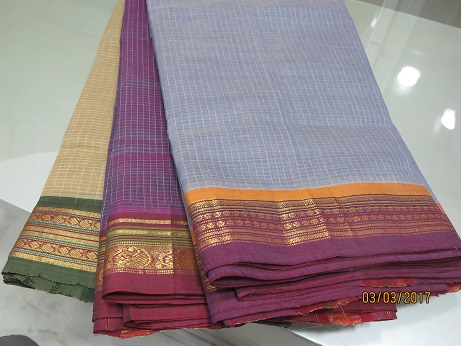
The elusive Narayanpet cotton saree. Copyright Ghanshyam Sarode
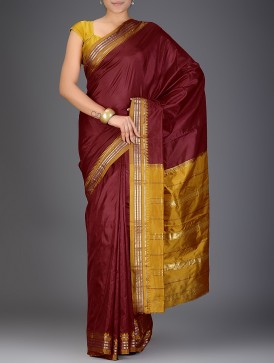
A gorgeous Narayanpet silk saree. Copyright http://www.jaypore.com
Are you thinking about why all this physical search for the saree when there is so much Google has to offer? Well for one, I needed pictures. And two, I needed to see a real, genuine Narayanpet, understand it and fall in love with it.
Now a quick Google search for Narayanpet sarees will tell you how these sarees originated. The origin of these sarees is linked to the time of the Maratha king, Chatrapati Shivaji Maharaj. He ruled over parts of Southern, Central and Western India in the 17th century. Wikipedia shows the spread of his kingdom.
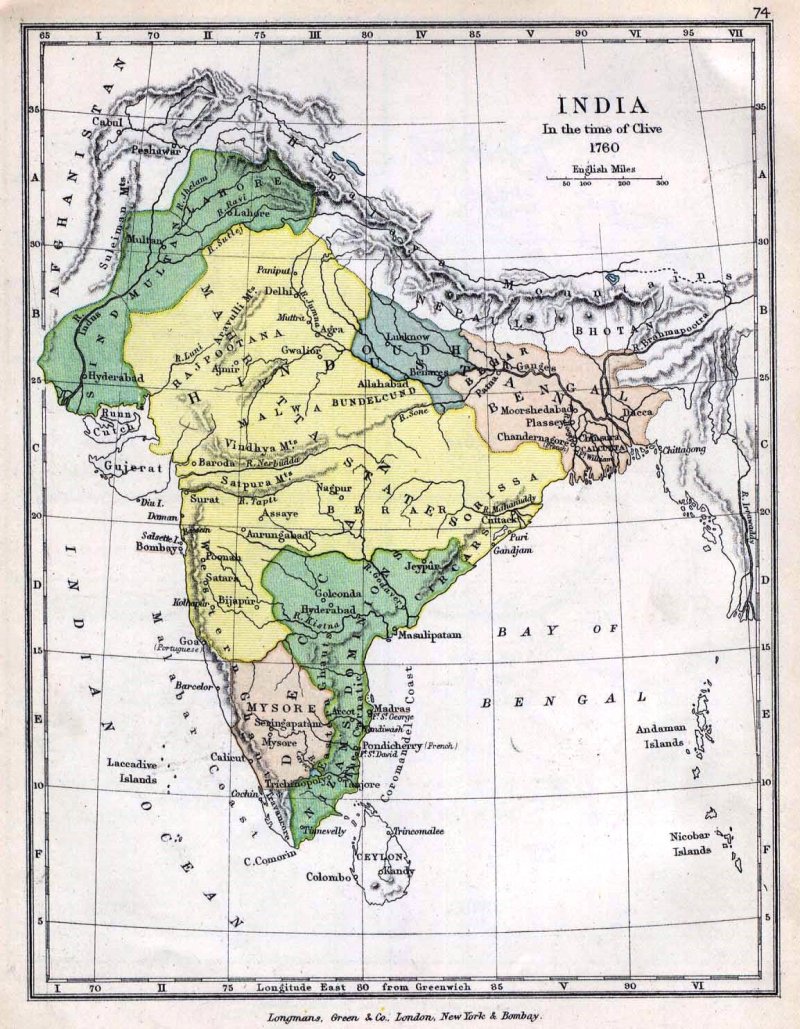
India, 17th century. The spread of Chatrapati Shivaji Maharaj’s kingdom. Source: Wikipedia.
Legend has it that during one of his campaigns, he travelled to Narayanpet, which is in present day Telangana. The map below shows how close Narayanpet is to the state borders of Karnataka and Maharashtra.
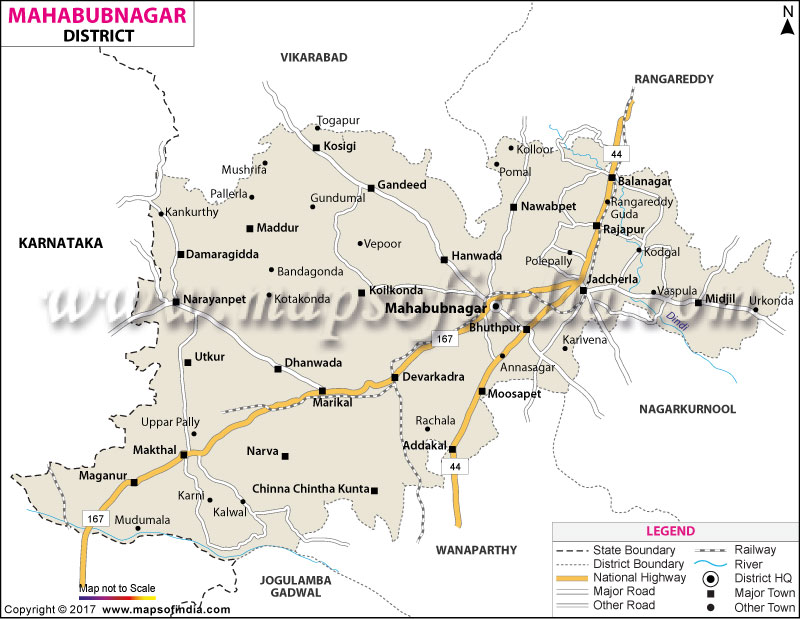
Present day Narayanpet. Source and copyright http://www.mapsofindia.com
Now a part of Shivaji’s troupe were weavers who stayed behind in Narayanpet. They created a new weave, a new design that was unique to Narayanpet, but it was heavily influenced by their Maharashtrian heritage. So it can be confusing to spot a Narayanpet cotton saree as it can easily mislead one with its typical Puneri (from Maharastra) border or an Ilkal (from Karnataka) pallu. So this is yet one more historical artefact that can be dated approximately the 17th century.
The other fact that a Google search throws at you is that Narayanpet is famous for its silk sarees. By now, I have realized that it is almost customary to find that temple towns having a rich ecosystem of silk weavers since silk is considered to be a must for performing religious ceremonies. That explains why Kanchipuram and Benaras, both prominent temple towns also produce the world’s most gorgeous and famous silk sarees – the Kanjeevaram and the Benarasi brocade.
What the Google search will not tell you however is, that Narayanpet is no longer the silk and cotton weaving hub it used to be. A trope that is visible in all saree stories – the next generation of weavers leaving their tradition of weaving for more lucrative career opportunities – is true even for the Narayanpet.
But there is hope and it is called Ghanshyam Sarode, a textile designer and master weaver who has strived to revive several near extinct weaves with the support of the Government. In his interview with me he described his endeavours to begin a project for the revival of Narayanpet silks and cottons in his hometown and home in Narayanpet. According to him, weavers need to be trained and need to be paid adequately.
Through his project, which is part supported by SFURTI and part ILFS, Sarodeji hopes to use better quality yarn, dye, zari and better weaving techniques to produce better sarees. He says “If we make exclusive high quality sarees, we can pay weavers more.” That is definitely a surer way to attract weavers back into the business of weaving.
And here are some more images of this saree as we get ready to draw the curtains on this post.




I am often asked this question on how one can identify a particular type of saree to ensure that it is genuine. Well, it’s a good question (which usually means I don’t have an answer). It is difficult, as I have said in my other posts. Some sarees lose their birthmarks over time. Mostly, I use my intuition and place faith in the seller. Of course that doesn’t mean I have never been led astray. I have been. But hey! In the end, how does the name matter? The saree is gorgeous – and the rose is still a rose by any other name. Thank you Shakespeare.
Post-Script
The title ‘An Act of Desperation’ is borrowed from the movie Chicago. I am absolutely incapable of such high-end wit by myself.
SFURTI is a GoI scheme and an acronym for Scheme of Fund for Regeneration of Traditional Industries. Read more about it here. http://kviconline.gov.in/sfurti/jsp/indexsfurti.jsp
ILFS is the acronym for Infrastructure Lease and Financial Services.
The excerpts of my interview with Ghanshyam Sarode have been reproduced with his kind permission.
































